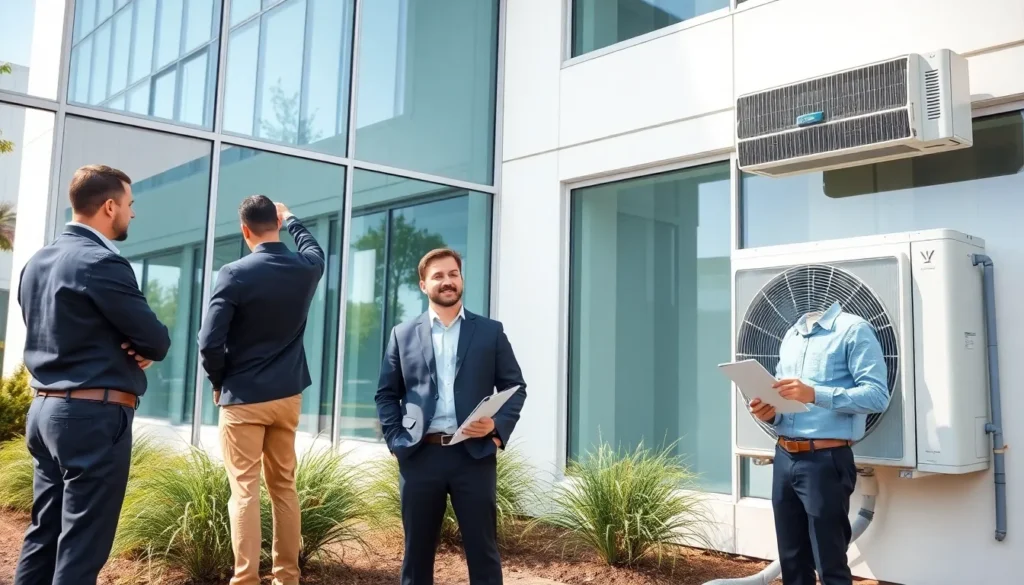Table of Contents
ToggleWhen was the last time you thought about the building you work or live in? Probably not too often, right? Yet, proper building maintenance and repair can be the difference between a well-functioning space and an unexpected disaster. Think about it, would you want to handle a leaky roof during a rainstorm? Of course not. Whether you’re in charge of a high-rise, a historic building, or your cozy bungalow, understanding the ins and outs of maintenance can save you time, money, and a whole lot of stress. Buckle up, because we’re diving into the world of building maintenance like a pro, complete with tips, tricks, and best practices to keep your space safe and sound.
Understanding Building Maintenance

Building maintenance isn’t just about fixing things when they break: it’s a comprehensive strategy to ensure a structure remains in excellent condition. It encompasses both preventive measures that keep problems at bay and corrective actions that address issues as they arise.
Maintenance is crucial for enhancing safety and comfort in any building. Regular inspections help identify potential issues early, which can save significant costs in the long run. From plumbing and electrical systems to roofing and HVAC, all components require attention.
Buildings with a clear maintenance plan often experience increased lifespan and improved efficiency. The goal is not just to maintain appearance but also to ensure structural integrity. Understanding this distinction is key to effective building maintenance.
Types Of Building Maintenance
When it comes to building maintenance, there are several types that property owners should be aware of. Each type plays a unique role in maintaining a building’s functionality and aesthetic appeal. Let’s break them down:
Preventive Maintenance
This type focuses on routine checks to prevent failure. Think of it like going to the dentist for regular cleanings instead of waiting for a cavity to develop. Regular inspection of systems such as heating, plumbing, and electrical can prevent costly repairs and extend the lifespan of equipment.
Corrective Maintenance
Corrective maintenance kicks in when something goes awry. It involves repairing or replacing items that have failed. It’s reactive but crucial for addressing immediate needs.
Predictive Maintenance
Leveraging data to foresee potential failures, predictive maintenance uses technology to gauge the condition of equipment. Sensors can alert managers to anomalies before they escalate into larger issues. This data-driven approach can be a game-changer for building management.
Deferred Maintenance
It’s tempting to let minor repairs slide, but deferred maintenance can lead to bigger problems down the line. Addressing issues promptly is essential to avoid snowballing effects.
Emergency Maintenance
This encompasses urgent repairs that require immediate attention. For instance, repairing flooding damage or fixing a broken boiler in the middle of winter can’t wait. Planning for emergency repairs is crucial, as they can disrupt operations and escalate costs.
Routine Maintenance vs. Emergency Repairs
Routine maintenance and emergency repairs serve different roles within building upkeep, but both are critical. Routine maintenance is designed to ensure everything operates smoothly. It includes scheduled inspections, seasonal maintenance, and regular upkeep tasks. For example, changing air filters or servicing heating units falls under this category.
In contrast, emergency repairs are reactionary. When a pipe bursts or a roof leaks, immediate action is required. Delaying these repairs can lead to more significant damage and increased costs. An effective maintenance plan minimizes the need for emergency repairs by addressing issues proactively, creating a healthier, safer environment for occupants.
To put it simply: a stitch in time saves nine. Establishing a clear routine helps keep emergencies at bay.
Best Practices For Building Repair
Implementing best practices in building maintenance can significantly enhance the longevity and efficiency of a structure. Here are some tried and tested strategies:
Regular Inspections
Schedule routine inspections to identify wear and tear before it escalates. These proactive checks can catch issues like water leaks or electrical faults early.
Document Everything
Keeping detailed records of maintenance activities is essential. Document repairs, inspections, and upgrades. This data can help track trends over time and inform future decisions.
Train Your Team
Educate those in charge of maintenance. Providing training ensures that everyone understands best practices and can respond appropriately to issues as they arise.
Use Technology
Consider utilizing maintenance management software to streamline tasks. These tools can help schedule inspections, manage work orders, and keep everything in one accessible place.
Always Be Prepared
Have a contingency plan for emergencies. Stock up on essential supplies and ensure maintenance staff knows how to react quickly and efficiently in case of an emergency.
The Role Of Technology In Maintenance
Technology is evolving at a rapid pace, and building maintenance is no exception. From smart building systems to maintenance management software, technology is reshaping the way maintenance is performed. Here are some key roles technology plays in building maintenance:
Smart Building Systems
Automated systems control heating, cooling, lighting, and security. They contribute to energy efficiency and user comfort. Sensors can detect issues and alert managers, reducing time spent on inspections.
Maintenance Management Software
Such platforms can help track maintenance tasks, manage schedules, and streamline communication. This software minimizes human error and enhances efficiency by automating reminders for inspections and upkeep.
Data Analytics
Utilizing data analytics helps in predicting equipment failures. By analyzing performance data, managers can identify patterns that indicate potential problems before they occur, thereby reducing costly repairs.
Choosing The Right Professionals
Selecting the right professionals for building maintenance and repair is paramount. The wrong choice can turn a simple repair into a complicated headache. Here are some tips for making the right decision:
Check Credentials
Always verify licenses and certifications. This ensures that the professional has met industry standards and possesses adequate knowledge.





